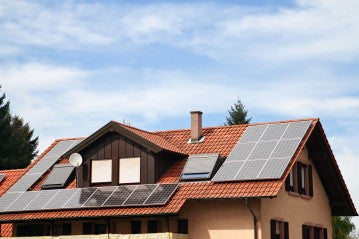
In recent years, solar energy has gained immense popularity as a sustainable and clean source of power. As more individuals and businesses embrace solar power, the market for solar energy products continues to evolve and expand. One crucial component of a solar energy system is the inverter, which converts the direct current (DC) generated by solar panels into usable alternating current (AC) electricity. When it comes to inverters, two main types dominate the market: solar micro inverters and string inverters. In this article, we will explore the features, advantages, and drawbacks of both types to help you make an informed decision for your solar energy system.
1. What Is a Solar Micro Inverter?
A solar micro inverter is a small device that is attached to each individual solar panel in a system. Unlike string inverters, which are usually connected to multiple solar panels, each micro inverter is responsible for converting the DC electricity produced by a single panel into AC electricity. This decentralized approach allows for independent operation and optimization of each solar panel in the system.
2. Advantages of Solar Micro Inverters
One of the primary advantages of solar micro inverters is the individual panel-level optimization they offer. With a micro inverter attached to each panel, the performance of each panel can be monitored and optimized independently. This means that even if one panel is shaded or underperforming, the overall system's output is not significantly affected. In contrast, with string inverters, the performance of the entire string can be compromised if one panel experiences issues.
Furthermore, solar micro inverters are known for their increased system reliability. Since each panel has its own inverter, the failure of one micro inverter does not impact the operation of the entire system. This decentralized architecture also enhances safety by reducing the risk of high-voltage DC power within the system.
Another advantage of micro inverters is their flexibility and scalability. They allow for easier system expansion, as adding new panels only requires installing additional micro inverters. This flexibility is particularly useful for installations with complex roof layouts or shading issues, as it enables panels to be installed in multiple orientations and configurations.
3. What Is a Solar String Inverter?
A solar string inverter, on the other hand, is a centralized inverter that is connected to a string or series of solar panels. Instead of each panel having its own inverter, the DC electricity from multiple panels is combined and fed into the string inverter, which then converts it into AC electricity.
4. Advantages of String Inverters
One of the main advantages of string inverters is their lower upfront cost compared to micro inverters. Since only one inverter is needed for a string of panels, the overall system cost can be significantly reduced, especially for larger installations. Additionally, string inverters are generally more efficient than micro inverters when it comes to converting DC power to AC power.
String inverters also tend to have a longer track record in the solar industry, with many years of reliable operation and performance data. This proven track record provides a level of assurance for customers considering this type of inverter.
5. Solar Microinverters vs. String Inverters: Which Is Best?
Now, the question arises: which type of inverter is best for your solar energy system? The answer depends on various factors, including your specific needs, system size, budget, and site conditions.
Solar micro inverters excel in situations where system performance optimization is crucial. If your installation site experiences shading issues, has panels facing different directions, or has a complex layout, micro inverters can maximize the output of each panel and ensure overall system efficiency.
On the other hand, if you have a larger system and upfront cost is a significant consideration, a string inverter might be a more cost-effective choice. String inverters are generally more suitable for installations with minimal shading and consistent panel orientations. They offer simplicity and proven reliability while maintaining good efficiency levels.
It's worth noting that advancements in technology have led to the emergence of hybrid systems that combine the benefits of both micro inverters and string inverters. These systems utilize power optimizers, which are attached to each panel to provide some of the advantages of micro inverters, while still using a centralized string inverter for conversion to AC power.
6. Solar Is the Solution
Regardless of the type of inverter you choose, it's important to remember that solar energy is a sustainable and environmentally friendly solution. By harnessing the power of the sun, you can reduce your carbon footprint, lower your electricity bills, and contribute to a cleaner future.
When considering the purchase of solar energy products, it is advisable to consult with a reputable solar energy provider or installer who can assess your specific needs and recommend the most suitable inverter technology for your system.
In conclusion, both solar micro inverters and string inverters have their advantages and considerations. The decision between the two ultimately depends on the specific requirements of your solar energy system. By understanding the features and benefits of each type, you can make an informed decision and ensure the optimal performance of your solar power installation. Remember, solar energy is the solution for a sustainable future, and the choice of inverter technology is just one piece of the puzzle.



0 comments